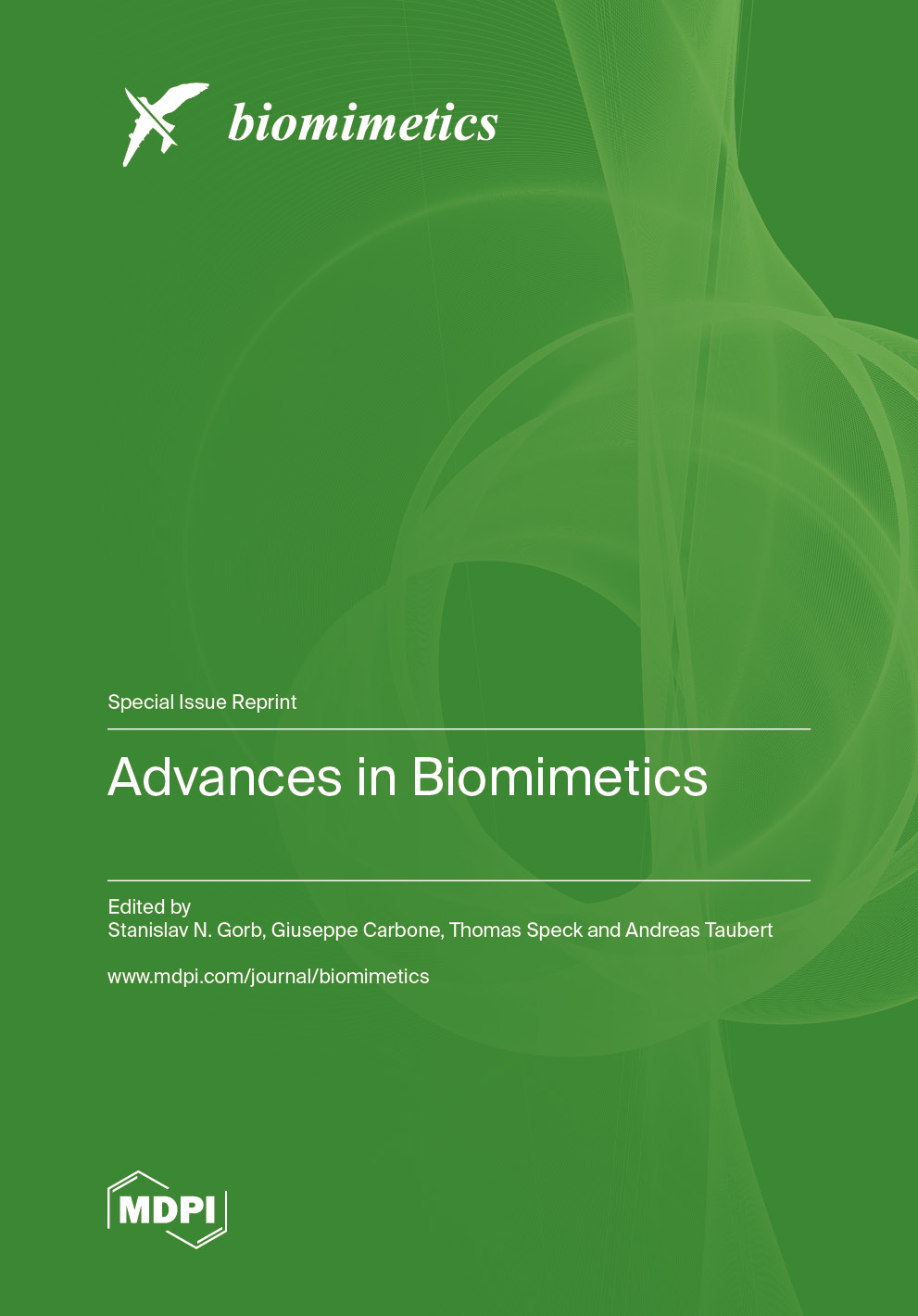Advances in Biomimetics: Combination of Various Effects at Different Scales
A special issue of Biomimetics (ISSN 2313-7673).
Deadline for manuscript submissions: closed (31 March 2023) | Viewed by 24982
Special Issue Editors
Interests: biological attachment; functional morphology; biomechanics; biotribology; biomimetics
Special Issues, Collections and Topics in MDPI journals
Interests: contact mechanics; tribology; wetting and interfaces; applied computational mathematics; automotive systems engineerin; rheology of materials
Special Issues, Collections and Topics in MDPI journals
Interests: functional morphology and biomechanics of plants; plant–animal interactions; bioinspired materials systems, structures, and surfaces; phylogeny of plants and functional structures; paleobotany; scientific education and training in botanic gardens
Special Issues, Collections and Topics in MDPI journals
Interests: inorganic materials synthesis in ionic liquids; functional ionic liquids-hybrid materials; ionogels; biomimetic materials; hybrid materials; calcium phosphate; silica; water treatment; energy materials
Special Issues, Collections and Topics in MDPI journals
Special Issue Information
Dear Colleagues,
Biomimetics research on living systems and attempts to transfer their properties to engineering applications. Biological materials, structures, and processes are predominantly based on the combination of various effects at different scales: from the nano-, micro-, through to the meso-, and finally, the macroscale. This Special Issue is devoted to the latest advance in biomimetics in its all subfields: (1) materials and structures, (2) design, constructions and devices, (3) surfaces and interfaces, (4) architecture and climatisation, (5) locomotion and bioinspired robotics, (6) sensorics, information processing and control, (7) chemical biomimetics, and (8) energy biomimetics. We also encourage submission of manuscripts that explore the relationships between these mentioned topics and especially those devoted to the development of biomimetic methodology.
Papers from biological fields focusing on the proper identification of the underlying principles in nature, and manuscripts that apply the findings on existing systems to modern technologies are welcomed. This inaugural Special Issue of Biomimetics calls for theoretical, experimental, and review contributions from researchers from the fields of biology, physics, material science, engineering, and all researchers who are engaged in this fast-growing field of science.
Prof. Dr. Stanislav N. Gorb
Prof. Dr. Giuseppe Carbone
Prof. Dr. Thomas Speck
Prof. Dr. Andreas Taubert
Guest Editors
Manuscript Submission Information
Manuscripts should be submitted online at www.mdpi.com by registering and logging in to this website. Once you are registered, click here to go to the submission form. Manuscripts can be submitted until the deadline. All submissions that pass pre-check are peer-reviewed. Accepted papers will be published continuously in the journal (as soon as accepted) and will be listed together on the special issue website. Research articles, review articles as well as short communications are invited. For planned papers, a title and short abstract (about 100 words) can be sent to the Editorial Office for announcement on this website.
Submitted manuscripts should not have been published previously, nor be under consideration for publication elsewhere (except conference proceedings papers). All manuscripts are thoroughly refereed through a single-blind peer-review process. A guide for authors and other relevant information for submission of manuscripts is available on the Instructions for Authors page. Biomimetics is an international peer-reviewed open access monthly journal published by MDPI.
Please visit the Instructions for Authors page before submitting a manuscript. The Article Processing Charge (APC) for publication in this open access journal is 2200 CHF (Swiss Francs). Submitted papers should be well formatted and use good English. Authors may use MDPI's English editing service prior to publication or during author revisions.
Keywords
- biomimetics of materials and structures
- biomimetic design, constructions and devices
- biomimetic surfaces and interfaces
- bioinspired architecture and climatisation
- locomotion and bioinspired robotics
- bioinspired sensorics, information processing and control
- biomimetic processing, optimisation, management
- biomimetic processing and molecular biomimetics
- energy biomimetics
- development of biomimetic methodology










